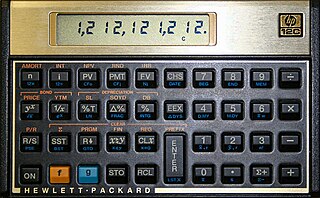 W
WThe HP-12C is a financial calculator made by Hewlett-Packard (HP) and its successor HP Inc. as part of the HP Voyager series.
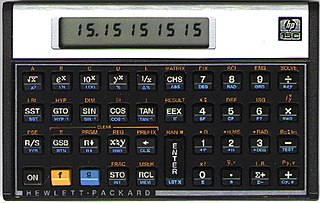 W
WThe HP-15C is a high-end scientific programmable calculator of Hewlett-Packard's Voyager series produced between 1982 and 1989.
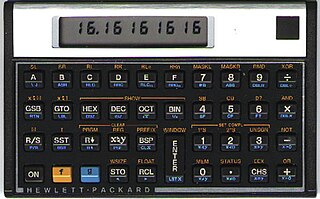 W
WThe HP-16C Computer Scientist is a programmable pocket calculator that was produced by Hewlett-Packard between 1982 and 1989. It was specifically designed for use by computer programmers, to assist in debugging. It is a member of the HP Voyager series of programmable calculators. It was the only programmer's calculator ever produced by HP, though many later HP calculators have incorporated most of the 16C's functions.
 W
WThe HP-25 was a hand-held programmable scientific/engineering calculator made by Hewlett-Packard between 1975 and 1978. The HP-25 was introduced as a cheaper alternative to the ground-breaking HP-65.
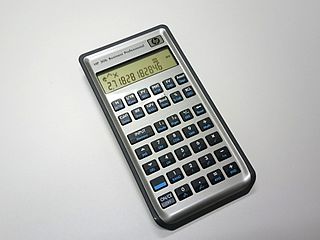 W
WThe HP 30b is a programmable financial calculator from HP which was released on 7 January 2010. The HP 30b is an advanced version of the HP's prior model HP 20b. Featuring a two line alpha numeric display, ability to input data via Reverse Polish Notation, Algebraic and normal Chain algebraic methods, and twelve digit display.
 W
WThe HP-34C continuous memory calculator was an advanced scientific programmable calculator, produced between 1979 and 1983
 W
WThe HP 35s (F2215A) is a Hewlett-Packard non-graphing programmable scientific calculator. Although it is a successor to the HP 33s, it was introduced to commemorate the 35th anniversary of the HP-35, Hewlett-Packard's first pocket calculator. HP also released a limited production anniversary edition with shiny black overlay and engraving "Celebrating 35 years".
 W
WThe HP 35s (F2215A) is a Hewlett-Packard non-graphing programmable scientific calculator. Although it is a successor to the HP 33s, it was introduced to commemorate the 35th anniversary of the HP-35, Hewlett-Packard's first pocket calculator. HP also released a limited production anniversary edition with shiny black overlay and engraving "Celebrating 35 years".
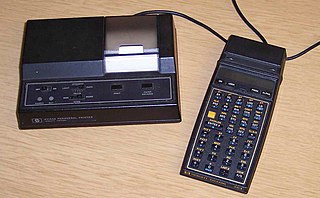 W
WThe HP-41C series are programmable, expandable, continuous memory handheld RPN calculators made by Hewlett-Packard from 1979 to 1990. The original model, HP-41C, was the first of its kind to offer alphanumeric display capabilities. Later came the HP-41CV and HP-41CX, offering more memory and functionality.
 W
WThe HP-41C series are programmable, expandable, continuous memory handheld RPN calculators made by Hewlett-Packard from 1979 to 1990. The original model, HP-41C, was the first of its kind to offer alphanumeric display capabilities. Later came the HP-41CV and HP-41CX, offering more memory and functionality.
 W
WThe HP-41C series are programmable, expandable, continuous memory handheld RPN calculators made by Hewlett-Packard from 1979 to 1990. The original model, HP-41C, was the first of its kind to offer alphanumeric display capabilities. Later came the HP-41CV and HP-41CX, offering more memory and functionality.
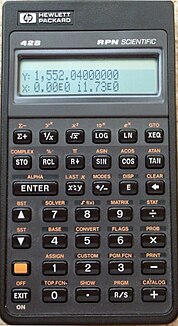 W
WThe HP-42S RPN Scientific is a programmable RPN Scientific hand held calculator introduced by Hewlett Packard in 1988. It has advanced functions suitable for applications in mathematics, linear algebra, statistical analysis, computer science and others.
 W
WThe HP-71B was a hand-held computer or calculator programmable in BASIC, made by Hewlett-Packard from 1984 to 1989.
 W
WThe HP 48 is a series of graphing calculators using Reverse Polish Notation (RPN) and the RPL programming language, designed and produced by Hewlett-Packard from 1990 until 2003. The series includes the HP 48S, HP 48SX, HP 48G, HP 48GX, and HP 48G+, the G models being expanded and improved versions of the S models. The models with an X suffix are expandable via special RAM and ROM cards. In particular, the GX models have more onboard memory than the G models. The G+ models have more onboard memory only. The SX and S models have the same amount of onboard memory.
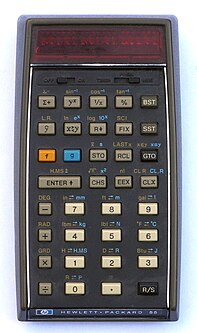 W
WThe HP-55 was a programmable handheld calculator; a lower-cost alternative to the HP-65. Introduced by Hewlett-Packard in 1975, it featured twenty storage registers and room for 49 keystroke instructions. Its outward appearance was similar to the HP-65, but its silver band went through between the display and the keyboard like HP-45, its some key functions were different from HP-65 and it did not have a magnetic card reader/writer. Like all Hewlett-Packard calculators of the era and most since, the HP-55 used Reverse Polish Notation (RPN) and a four-level automatic operand stack.
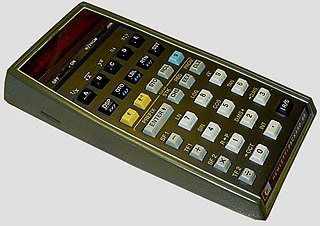 W
WThe HP-65 is the first magnetic card-programmable handheld calculator. Introduced by Hewlett-Packard in 1974 at an MSRP of $795, it featured nine storage registers and room for 100 keystroke instructions. It also included a magnetic card reader/writer to save and load programs. Like all Hewlett-Packard calculators of the era and most since, the HP-65 used Reverse Polish Notation (RPN) and a four-level automatic operand stack.
 W
WThe HP-71B was a hand-held computer or calculator programmable in BASIC, made by Hewlett-Packard from 1984 to 1989.
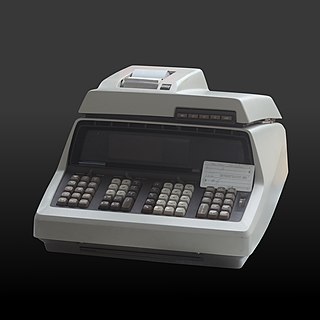 W
WThe Hewlett-Packard 9100A is an early programmable calculator, first appearing in 1968. HP called it a desktop calculator because, as Bill Hewlett said, "If we had called it a computer, it would have been rejected by our customers' computer gurus because it didn't look like an IBM. We therefore decided to call it a calculator, and all such nonsense disappeared."
 W
WThe HP Prime is a graphing calculator introduced by Hewlett-Packard in 2013 and currently manufactured by HP Inc. It was designed with features resembling those of smartphones, such as a full-color touchscreen display and the ability to expand functionality by means of downloadable applications. It claims to be the world's smallest and thinnest CAS-enabled calculator currently available.
 W
WThe Hewlett-Packard Voyager series of calculators were introduced by Hewlett-Packard in 1981. All members of this series are programmable, use Reverse Polish Notation, and feature continuous memory. Nearly identical in appearance, each model provided different capabilities and was aimed at different user markets.